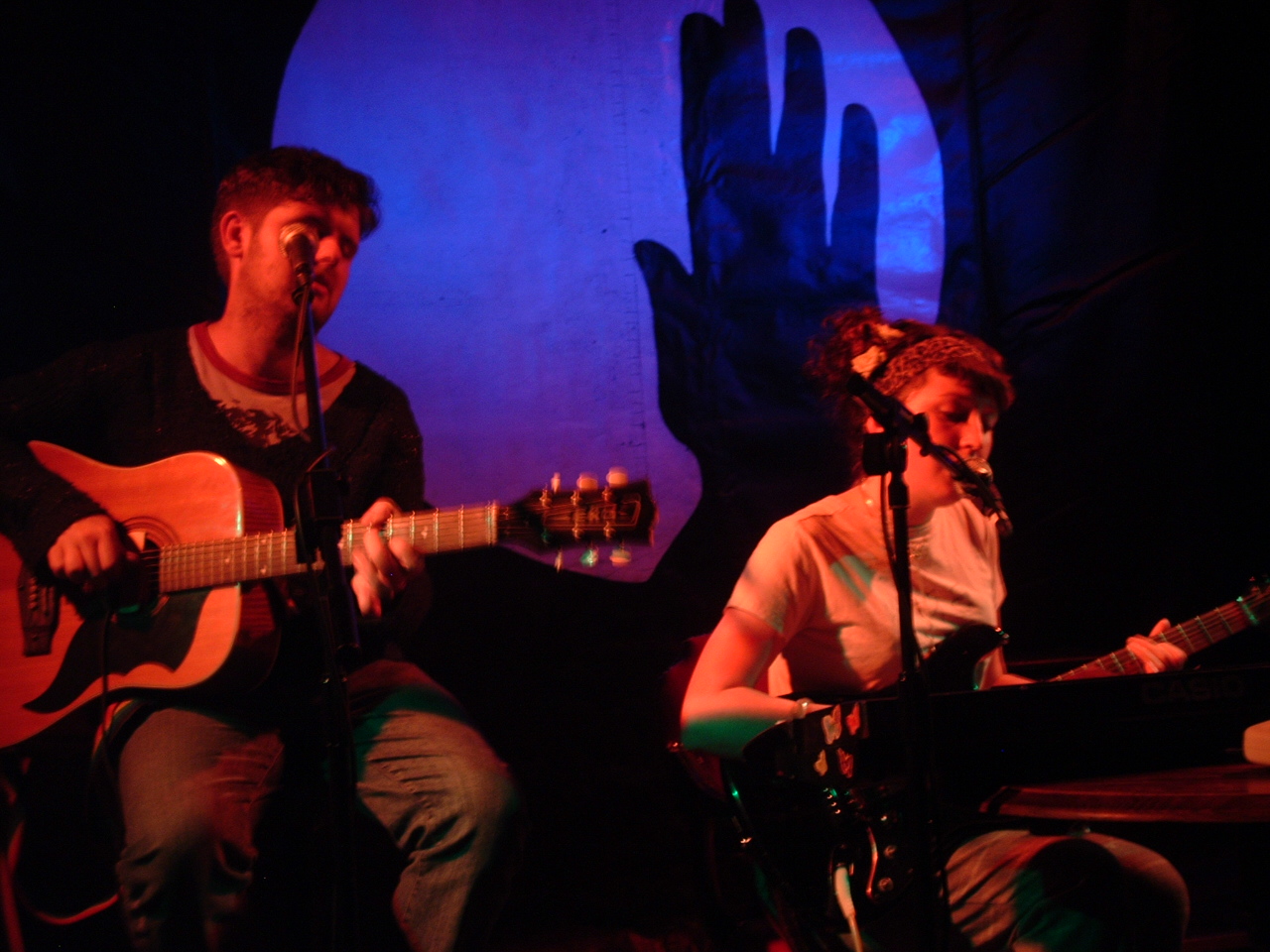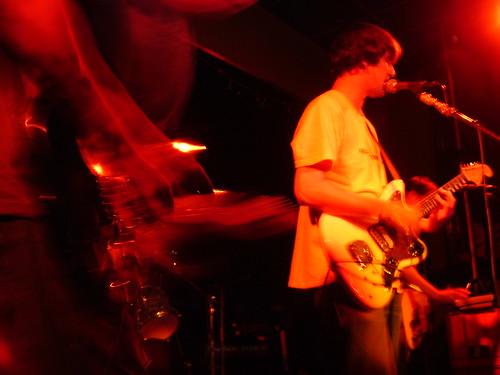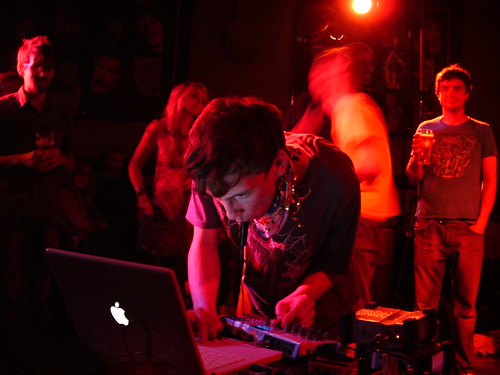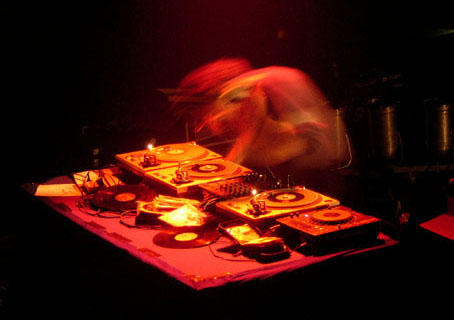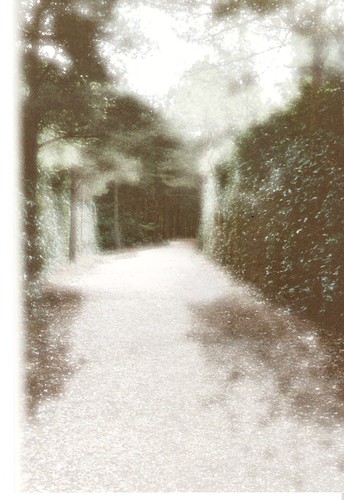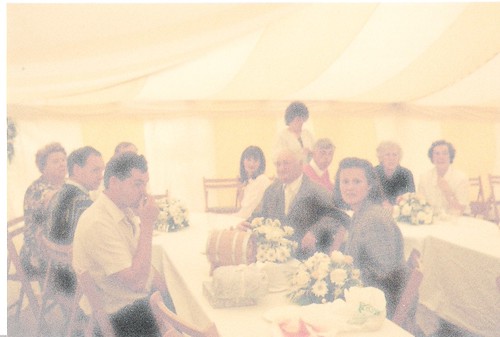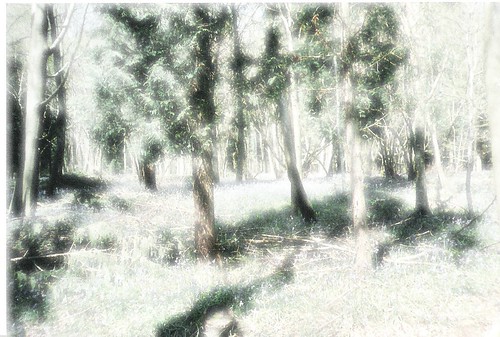But, let’s start at the beginning, shall we? It began with
CSS’ ‘Let’s Make Love And Listen To Death From Above’, one of my singles of 2006: first heard on MTV2, swiftly ubiquitous; a fun, geeky, electropop bop-along, sheer catchiness. In October 2006, a magazine caught my eye: Issue #16 of
Plan B, with CSS on the cover. I found it one of the strangest things I ever read: the writers discussed pop music openly and shamelessly – Kelis, Camille, Justin Timberlake – alongside Sutcliffe Jugend, Sunn O))), Coil and Merzbow, in terms polar to my usual total scorn. In the Playlist column, in the recommendation of
Girl Talk’s ‘Night Ripper’, the gauntlet was thrown down: "serves to answer the question ‘What’s so great about pop music?’" In the next issue,
Kieron Gillen, in one of the regular ‘I Hate…’ columns, wrote about anti-rockism: "I’ve become sick of seeing the same intrinsically poptimistic friends lacerating someone over dismissing mid-period Destiny’s Child for reasons of image" – ‘Wait a minute,’ my addled brain spurted out, ‘serious music fans actually like Destiny’s Child? Image isn’t a valid reason anymore? And what the hell is poptimism, anyway?’ This was news to me – the idea that music has to be judged separately from its means of production, that music could no longer be dismissed on the grounds that it was ‘mersh’. That, for example, it was OK to admit I liked CSS. I now had to start from square one.
You have to understand that my first ‘engaged’ contact with music, my first real taste of fandom, was through punk and metal – Sum 41 (shudder), Alien Ant Farm (argh), Green Day, Queen, Iron Maiden. It went from there – Deep Purple, U2, The Doors, Pink Floyd. I was, quite frankly, the most unrepentant rockist imaginable, unable to get beyond the ideas of presence and conviction – if it wasn’t obvious that they ‘meant it’, they weren’t good enough for me. Reading Mojo for years didn’t help: their necrophile hero-worship spread like a flesh-eating virus (although, to date, I have still only bought one Bob Dylan album, probably the optimum number.) It got worse as time went on: The Velvet Underground, Joy Division, The Fall, The Smiths, Godspeed You Emperor,
In Utero-era Nirvana – if it wasn’t sardonic, tortured, or sonically painful it wasn’t to my tastes. My earnestness was, looking back, almost wishing-the-earth-would-swallow-me embarrassing, but there you go: rockism is an essentially adolescent attitude, and emotional engagement with recorded product – the illusion of emotional communication with a presence that, ultimately, isn’t there – is the most appropriate mode for a time of isolation, delusion and fantasy, of
Sturm und Drang on a universal scale. Of course, I universally poured scorn on music that didn’t meet these criteria – especially manufactured pop, a genre that many will tell you reached its height in that year, 2005 (what with
Girls Aloud, etc.) The whole process hit its apex with
The Holy Bible, which, combined with one of the worst depressive episodes I ever had, resulted in… God, what tedium. Sorry if you’ve endured it this far: I hate talking about myself, and only bring forth the most boring material imaginable when it hits that subject. In a sense, only lying – or talking about other people (it amounts to the same thing) – ever produces anything vaguely interesting from me. Don’t worry, there’s some slightly interesting bits coming up: if you want to skip the next two or three paragraphs, I won’t be offended.
*START SKIPPING*
Anyway, fast forward to January 2007. I’ve been buying Plan B for three months, searching out a lot of the music it recommended, as well as albums I’d wanted for some time but had thought too experimental to get (Scott Walker’s Tilt, The Stooges’ Fun House, Scratch Acid’s The Greatest Gift, etc.) At the end of the month, I get my first job. Two months later, sick with apprehension, I travel up to London for a These New Puritans gig (cancelled at the last second), and my first ever visit to a nightclub (yes, I know, embarrassing.) Earlier that month I had bought a copy of Ed Rec Vol. 2, a CD I listened to, maybe twice, and never since. It was the breaking point for me: pop and me did not go together. I didn’t buy any music until after I quit my job and started studying for my exams, in May (Panda Bear’s Person Pitch, as it happens.)
Maybe I can get round to explaining now why I don’t, can’t, and refuse to discuss the possibility of like(ing) ‘mersh’ pop: the key word here is ‘poptimism’. And my first experience of the attitude came through
Plan B: a now-infamous review of the Paris Hilton album on their website.
Plan B have always had a sneaky vein of poptimism among their writers:
kicking_k, Neil Kulkarni, Kieron Gillen,
David McNamee,
Lauren Strain, Emily Bick,
Miss AMP, Hannah Gregory (and, to a certain extent, editor-in-chief
Everett True, though he mostly prefers the Orange Juice/Sarah Records/The Concretes/Camera Obscura kind of indie-pop.) In this case, it posits itself (like New Labour) as an essentially egalitarian ethos (fitting in with
Plan B’s democratic approach to genre): the anti-rockist ethos pioneered by John Savage, Ian Penman, Edwin Pouncey and most post-punk bands (and their subsequent fanzine editors) in the late 1970s taken to its logical conclusion – "it’s about an even-handed love and appreciation of the music" (Kieron Gillen). Against the rockist insistence on the artist’s authenticity – signified by the (false) emotional connection between listener and artist, matters of production (that the recorded artefact must be as close to ‘live’ as possible), and means of production (no ‘selling out’) – poptismism argues that, "All art is artifice. There’s no magic in the means of production. The thrill imparted by the music is all that matters. The pleasure principle trumps all." Thus, if you like it, you can listen to it without guilt: John Coltrane and Girls Aloud are both on the table. The codes of cool and snobbery, the misogynistic privileging of rock (the music of phallic energy, aggression, domination), the retrograde necessity of hailing a set canon, preventing musical advancement – nullified. Except that…
*STOP SKIPPING*
…it’s not. Poptimism, in practice, does not act in an egalitarian manner: it privileges pop music, and not merely pop but manufactured pop. This is partly because of a love of iconoclasm in poptimist writers (clearly developed by too much argument, too much of lying in a warm bath of rhetoric), partly an underlying ressentiment: the fact that rock, despite everything, still occupies a privileged position in popular music and conventional (i.e. Sunday supplement) music criticism simply riles them. I might also suggest here that poptimists tend to emerge from the intelligentsia, and hence occupy a lower position in the social world of music: the world of rock ‘n’ roll, with its Rousseauian ideals of untutored cool, anti-intellectualism, and fixation with sexuality and sexual aggression as barometers of social place, most probably does not work for them – hence, ressentiment and the need to circumvent the socio-ideological structures and sexual politics of rock ‘n’ roll, and the re-introduction into rock ‘n’ roll of the intellectual element, and the continual need to justify themselves.
This does not, immediately, discount poptimist arguments about the validity of pop music, even manufactured pop. But that is not the whole story: the very fact that ‘pop’ is, not a privileged term, but a term that is given credence at all, as one having inherent value, is endemic in certain underground music discourse. There are, of course, some writers who can apply it quite well: for example, Mr Kulkarni, who, in Bring The Noise wrote approvingly of Dr Dre that he made "the most immaculate pop music since Michael Jackson’s late Seventies/early Eighties run at the godhead" (I must profess a liking for ‘California Love’, ‘Ain’t Nothing But A G Thang’ and certain N.W.A. singles at this point, especially ‘Fuck Tha Police’), also wrote approvingly of Young Marble Giants' Colossal Youth in last month’s Plan B, "That YMG decided to make pop music in response [to Thatcherite Britain], as some kind of magic wardrobe escape to finer times, is touching still". But what we seem to find in a vast number of writers is the assumption that discussion of any music must actually be couched in terms of pop music. Of course, they could (and do) argue that pop music has been, and is, the central point of musical pop culture: that its economy is essentially that of pop music, with the single and artist album, purchased by the fan, is the central motor of music’s economy, and that populism is the ethos staying closest to musical culture’s roots. On which we must call bullshit: aside from the fact that there has always been a subterranean level of music (at the same time people were dancing in Deep Southern juke-joints to bluesmen with records out, musique concréte was being devised in Europe), populism has never produced musical advancement of any kind, and, moreover, tends to produce a downward spiral of quality as expectations diminish and diminish (which is exactly what happened to indie rock – the fact that, around 1984 (perhaps with the first Smiths album) it acquired an audience, and their expectations, to play to, meant less and less variety and quality, eventually ending with – (*groans*) – Oasis. No, Menswear, they were really vile.)
Although, what is behind this privileging of the populist but a privileging of the desire-economy of laissez-faire capitalism? The idea that economies should be based on delivering "what people really want" is exactly the basis of intellectual poptimism (and, indeed, its multiple antecedents). And any anti-capitalist cannot swallow uncritically the products of populist/popular music, and, certainly, any privileging of the term has to be questioned mercilessly. This may sound a rather adolescent assertion – think of the archetypal teenage metal fan/twee-pop fanatic complaining about commercial and manufactured pop with essentially no back-up – but it is true: as writers from Marx to Baudrillard have pointed out, capitalist economics operate at a psychological/psychic level; capitalism operates on an economy of desire, of addiction - like Burroughs’ extra-terrestrial virus of Control – and this elevation of the pleasure principle is imprinted directly into the pleasure/consumption matrix at the heart of poptimism. The insidious nature of the pleasure principle has assumed an increasingly important part in capitalist societies, as the capitalist worldview advances toward ontological status with the advent of universal hyperreality: I don’t simply mean the increasingly callous, materialistic greed of the British public, but the obsession with gratification that has taken hold with the increasing pace of life, dictated by a capitalist technology-complex; the increasingly frenzied (and not in the good way) attitude of people in clubs (
except, of course, at dubstep raves); increasing levels of alcoholism and drub abuse; the sovereign place that the military-entertainment complex holds in technology, in which every innovation derives from the wish to make someone’s (i.e. yuppies’) lives ‘easier’. The depressives (and Schopenhauer) were
correct from the very beginning: "Desire is the root of all suffering."
It is in light of this that poptimist objections to independent music become comprehensible: the usual allegation is that indie music of any colour and stripe is ‘boring’ (the problem being that, with the vast majority of chart indie, this is undoubtedly true); the prime quote that sticks in my mind (I think it was in the Playlouder Singles Review column), on
Slow Down Tallahassee’s beautiful ‘So Much For Love’: "if you’re going to listen to pop, why would you want budget production, when you can have Timbaland?" The idea that production values carry ideological attributes, and that people might change to less-than-immaculate production values out of general principles is abhorrent to them (hence the usual assumptions that anarchists listen to nothing but decaying Discharge tapes, or that all visibly independent bands will have shit production values.) The movement of modern consumer capitalism is to increasing convenience, pleasure, ease, technological sophistication – exactly what poptimists want from music. This is also revealed, of course, in pop music’s attitude to sex: as pop becomes more and more ‘contemporary’ in a psychic sense, the sexual content becomes simultaneously more and more explicit and abstracted; every single song on the Justin Timberlake LP is about sex (whether or not it’s actually about sex: as the
Plan B reviewer, Alex Macpherson, remarks, "Even the song about the dangers of crack sounds post-coital"), but the actual singing and production is completely blank, reminding one of Ballard in
The Atrocity Exhibition: "relationships so lunar and abstract that people will become mere extensions of the geometries of situations." It’s useful to compare this to the sexual attitude of twee-pop: Sarah Records-style pop is essentially sexless, and what romance there is is extremely old-fashioned, chaste and emotionally-involved in its terms of endearment; early C86 is also noticeably left-wing (many early twee-pop groups played benefits for the miners; Simon Reynolds identified twee-pop as essentially a retreat from the harsh realities of Thatcherite Britain) and mainly released on independent labels (in a time when that still meant something, ideologically.)
Beyond this, there is something crucially wrong at the heart of poptimist criticism, and in the idea that pop music should be given critical credence. This piece begins to give you some idea of what it is:

